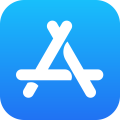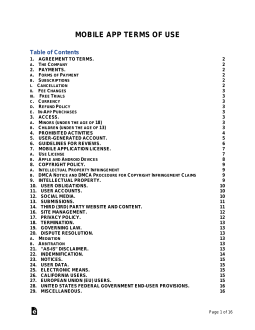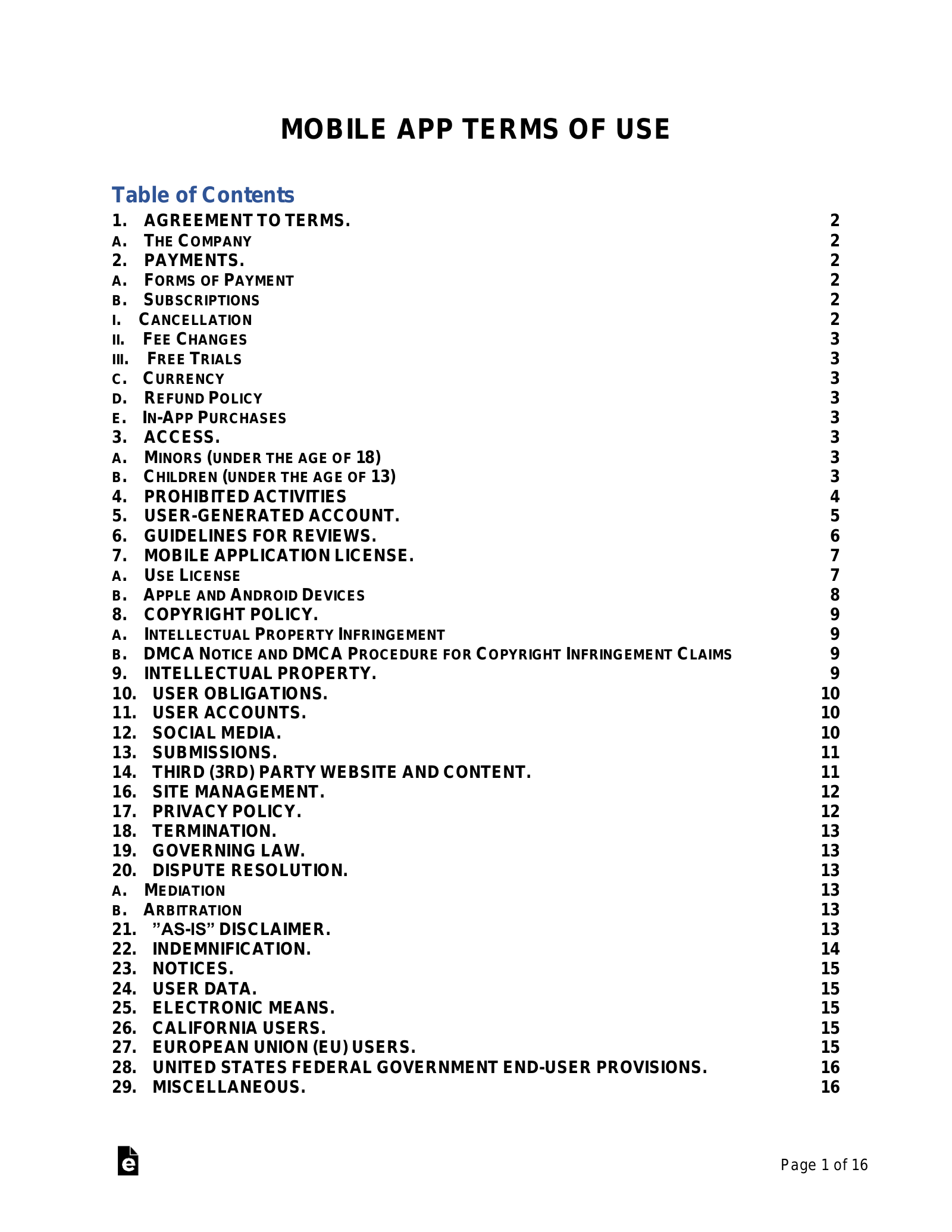Updated February 23, 2023
A mobile app terms and conditions outline the policies when a user accesses it either on an Android or Apple device (iOS). Also referred to as an “end user license agreement,” users must adhere to the app’s terms. It is common for a developer to link the terms in the user’s profile or setting area.
App Store and Google Play Store
A platform’s (iOS and Android) terms and conditions take precedence over the mobile app’s terms of use. This includes refund requests, which are not provided by the app developer and are under the platform’s policies.
Are terms and conditions required?
No, terms and conditions are not legally required under any jurisdiction. Its primary purpose is to hold harmless and indemnify the app developer, which both Apple and Android already have their own default agreement that users must comply with and accept.
Privacy Policy Required
Apple and Android require mobile apps to have a privacy policy that includes how they collect and manage data from their users.
 Apple (iOS)
Apple (iOS)
Developers have the option to add their terms and conditions. If not, Apple’s End-User License Agreement (EULA) will serve as the agreement between the developer and its users.
 Android (Google Play Store)
Android (Google Play Store)
Developers do not have the option to add terms and conditions on the Google Play Store. Users are, by default, subject to the Google Play Terms of Service.
Important Clauses (5) |
1. Prohibited Behavior
The user understands that the app can only be used for its intended purpose. It should be mentioned that the following acts are strictly prohibited:
- Illegal or unlawful activity;
- Attempts to reuse any intellectual property;
- Decompile, disassemble, or reverse engineer the app;
- To share an account or premium content without authorization;
- Collect usernames or personal data of other users;
- To trick, harass, defraud, or mislead other users;
- Interact, manipulate, or interfere with the security or software outside of its intended use; and
- To disparage, tarnish, or otherwise harm the site in any manner.
2. Intellectual Property
Any and all writings on the mobile app, including writings, source code, databases, or any other software cannot be duplicated or used by users.
Copyrights, trademarks, service names, and other legally protected marks are safeguarded under the United States Patent and Trademark Office (USPTO).
3. User-Generated Content
A list of rules regarding contributing posts, comments, reviews, or other writings or data should be mentioned. Commonly, this includes not allowing users to write any feedback that incites hate, is slanderous, harassing, discriminatory, or any hurtful language outside of the sphere of healthy debate.
4. Right to Use
Otherwise known as a “license to use,” is the legal right (license) given to a user that grants permission to use the mobile app. Generally, this standard language gives the user a non-transferable, non-exclusive, and non-assignable right to use the software that can be terminated at any time at the developer’s discretion.
5. Limitation of Liability
Otherwise known as an “indemnification clause,” limits the developer’s liability in the event of harm caused to the user. This holds the developer harmless if there is downtime, incorrect information, or the application causes direct or indirect harm to a user.


